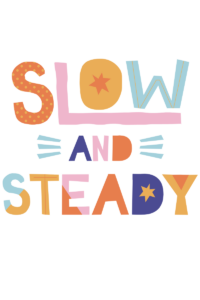Numberless Graphs are my jam. For those of you that are not familiar with Numberless Graphs, it is very similar to numberless word problems. Sometimes Numberless Graphs are called Slow Reveal Graphs. The goal is for students to discuss what they notice and wonder about the graph as well as what they think the graph might be about. You can provide a piece of information at a time and then students adjust/revise their conjectures.
There are many types of Numberless Graphs. Below I provided some examples.

Here’s Why They Are Great:
I’m drawn to these graphs because they revamp boring curriculum materials. It’s a great routine to add to your math block. With the standards, Data always seem to be lumped at the end of the school year. This mainly is because we feel other, harder topics should take precedence. However, if you ask mathematicians and even high school teachers, the lack of emphasis in Data is a problem.
You May Be Thinking “My Classroom Uses Data, So I’m Good”.
Sorry to be the one to tell you this. It’s a problem really dull. Here’s why at first Data is so much fun for students. You log your favorite candy. Yum! Or maybe your favorite season. After doing the same thing over and over, year after year, it becomes lifeless. Especially when you get to upper elementary, the Data is so dry.

Let’s Make It Fun!
Sure we can do the typical “what’s your favorite candy,” and lets graph it. But let’s dig deeper into data. These graphs make can be more engaging for students. How can we do that? Make them culturally relevant. And how do we do that? Let them have a choice in what these graphs could be about?
With numberless word problems, discourse is a significant component of problem-solving. Here’s where Numberless Graphs fits perfectly. It elicits discussion. We want students to make meaning of problems. And we want them to defend their thoughts.
Because it can be really open-ended, this activity naturally allows for differentiation. It can be a low floor, high ceiling tasks. Take a look at the example below. What are some possible student responses?
Now there is some structure to these graphs. You can add small pieces of information at a time to see if students adjust their thinking for solving the problem.

I would recommend, and I don’t see this as often is to have students write sentences to describe the data. Yes, discussions happen, but I think that written responses are another form of representation which is needed in interpreting data.
Incorporate a Numberless Graph in your math routine. Start with something small and lead up to something a little more complicated. In time you can put this in a center/station, and students can even create their own using manipulatives or drawings. Data can be boring if we let it be, so let’s breathe some life back into it.
Want to check out more?
MEMBERSHIP SITE:
https://zennedmath.com/online-courses/
FACEBOOK GROUP: Zenned Math Teachers
https://www.facebook.com/groups/zennedmathteachers/
YOUTUBE CHANNEL: Zenned Math
https://www.youtube.com/channel/UC5njH_5LoK6G67BvZecGfnw?
WANT ME IN YOUR INBOX? Sign up for my newsletter
https://view.flodesk.com/pages/5efc876dcaabca0028b95eb5
DISCLAIMER: Some links included in this blog might be affiliate links. If you purchase a product or service with the links that I provide, I may receive a small commission. There is no additional charge to you!

